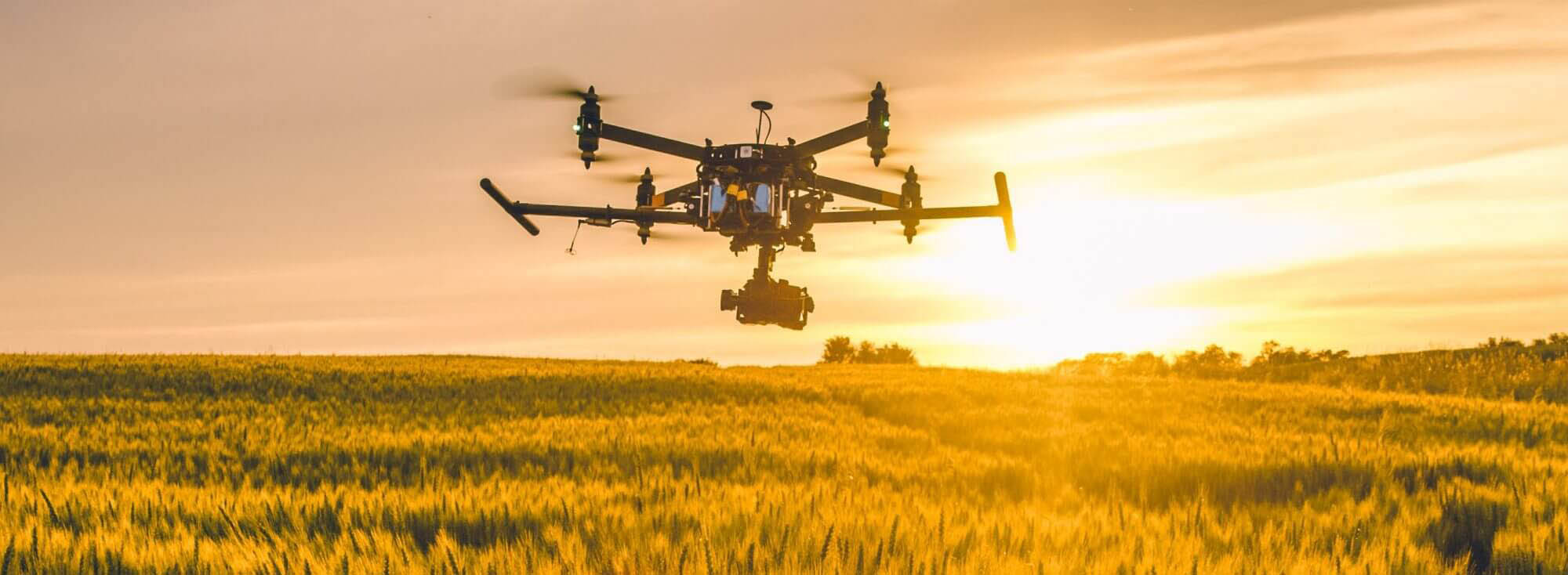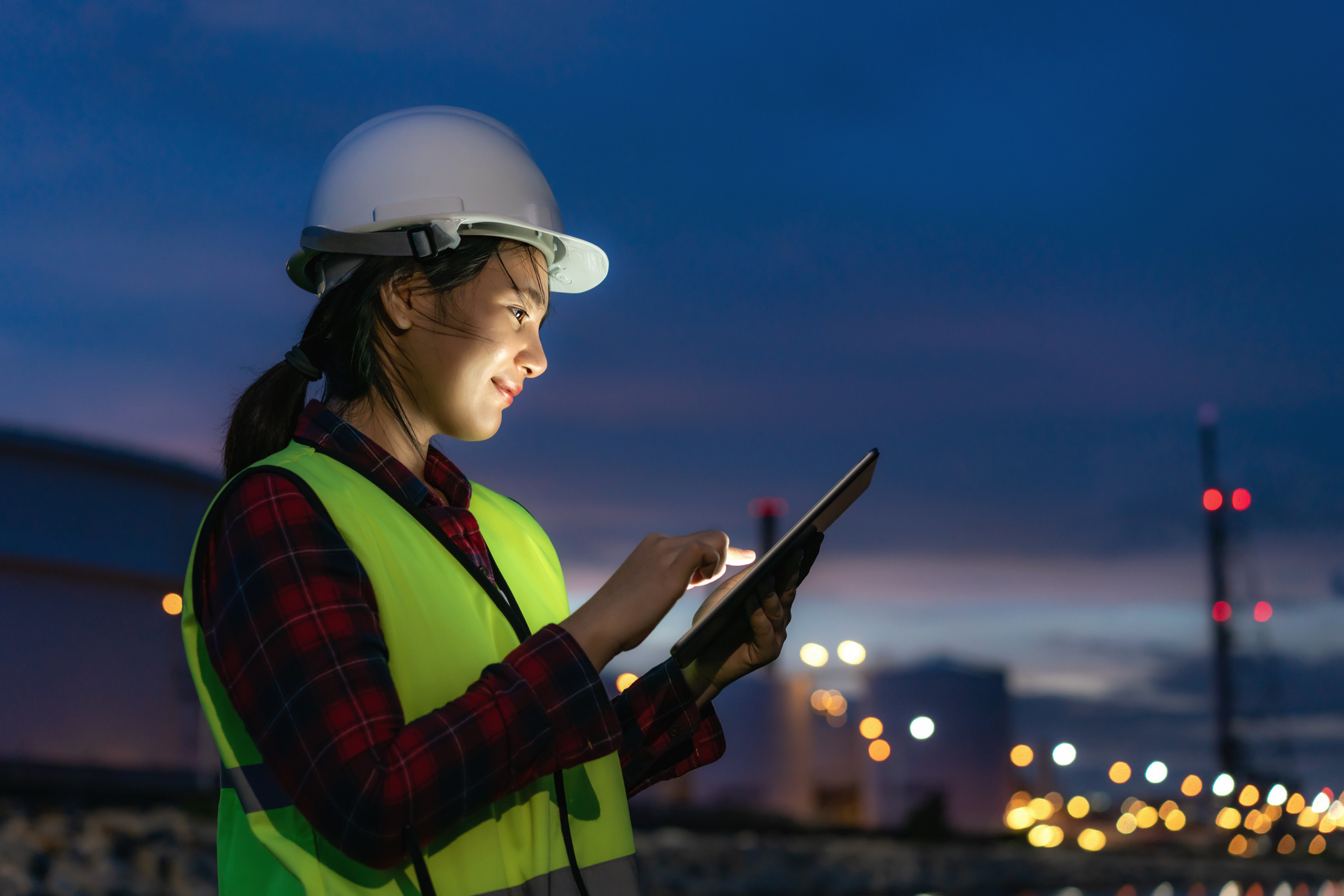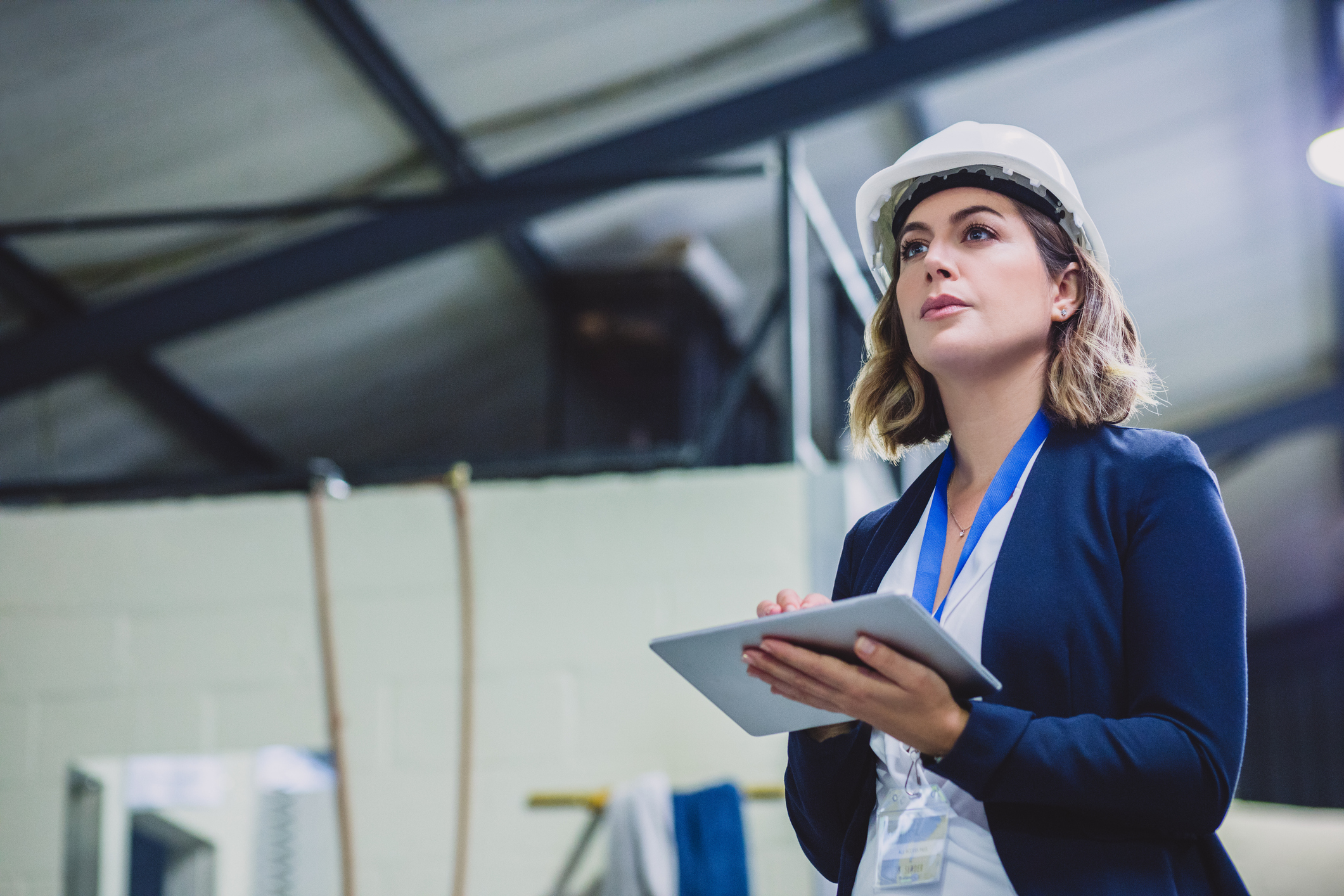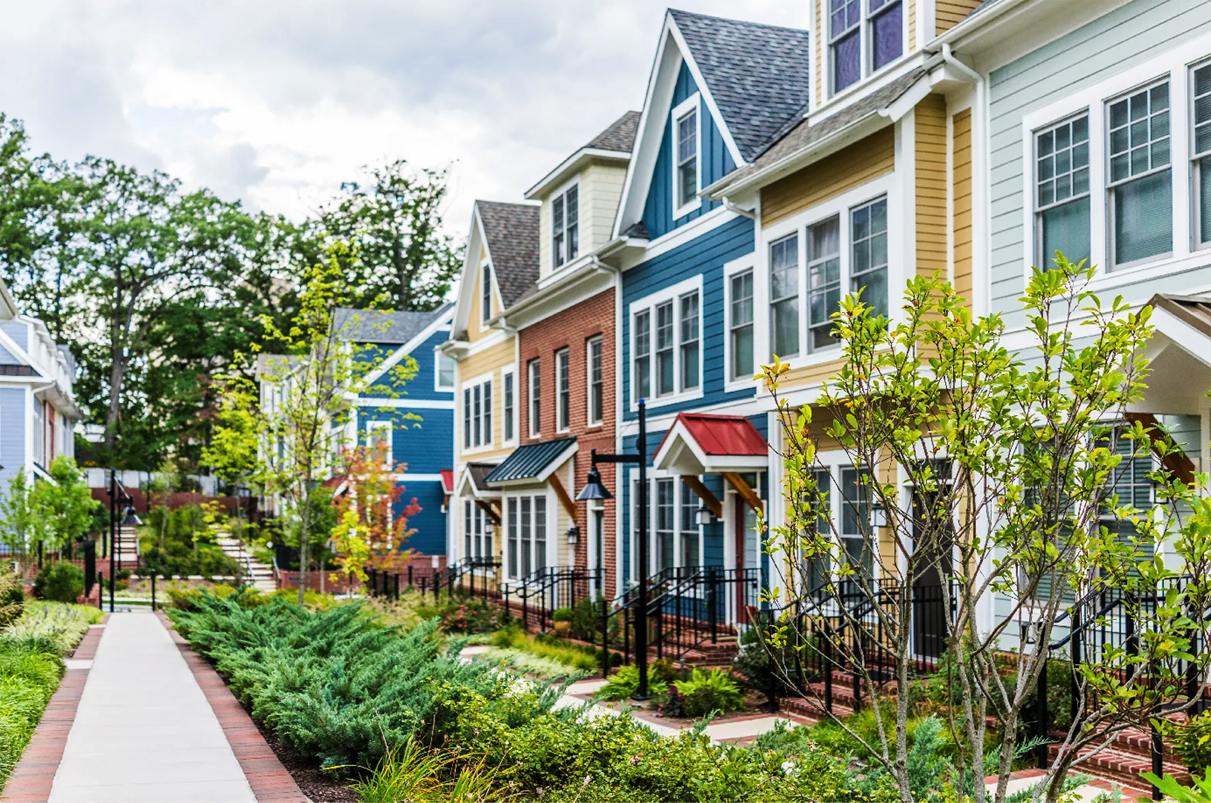In most areas, you cannot simply send a drone out and start taking pictures or video. Before sending your drone off, take time to get to know the area so you are familiar with the terrain, property lines and elevations. From there, you can ensure you’re following any laws related to flying heights and property trespassing. There may also be guidelines about keeping your drone within your line of sight, registering it with the FAA and avoiding using your drone around other aircraft.
What Is a Drone Inspection?
Drone inspections involve using unmanned aerial vehicles (UAVs) to perform visual checks and gather data on large assets for maintenance purposes. These inspections increase efficiency, protect inspectors from dangerous conditions, and allow for remote monitoring through a drone’s camera. Industries that rely on visual inspections can greatly benefit from the use of drone inspections.
Those considering adding drones to assist with their safety inspections and other processes should know what a drone inspection is, who uses them and how companies can benefit from their use. Additionally, it’s crucial to be aware of how drones can make your staff safer and how they could provide even more value in the future.
Drone inspections have become critical to several industries that rely on visual inspections to complete their maintenance protocols and procedures. Often, drones are used when a company needs to inspect the condition of a larger asset. Since drones are quite mobile and can get up high to collect visual data, they’re perfect for times when companies want to complete inspections quickly and reduce the need to put inspectors in dangerous conditions to inspect an asset’s hard-to-reach areas.
In the past, for example, inspectors would have to climb up scaffolding inside of a boiler to inspect a weld or go several stories up a tower to inspect a guy-wire. Actions like these put the inspector in harm’s way and could lead to injuries. Now, inspectors can fly drones remotely to conduct the inspections safely on the ground through a monitor and a drone’s camera.
One of the main types of inspection employed at workplaces is referred to as a visual inspection. In a visual drone inspection, the inspector uses a drone to search for potential maintenance issues. The drones will fly above and around an asset to let the inspectors carefully look at all of the relevant areas that need to be maintained.
Besides a visual drone inspection, a drone can help facilitate other types of inspections. Several kinds of sensors can be installed on a drone to conduct different inspections that require more than just a visual check. For instance, some companies use thermal cameras to see where heat is escaping from a building to help guide their maintenance efforts as well as to identify roof leaks.
Do you need a safety inspection or on-site construction monitoring?
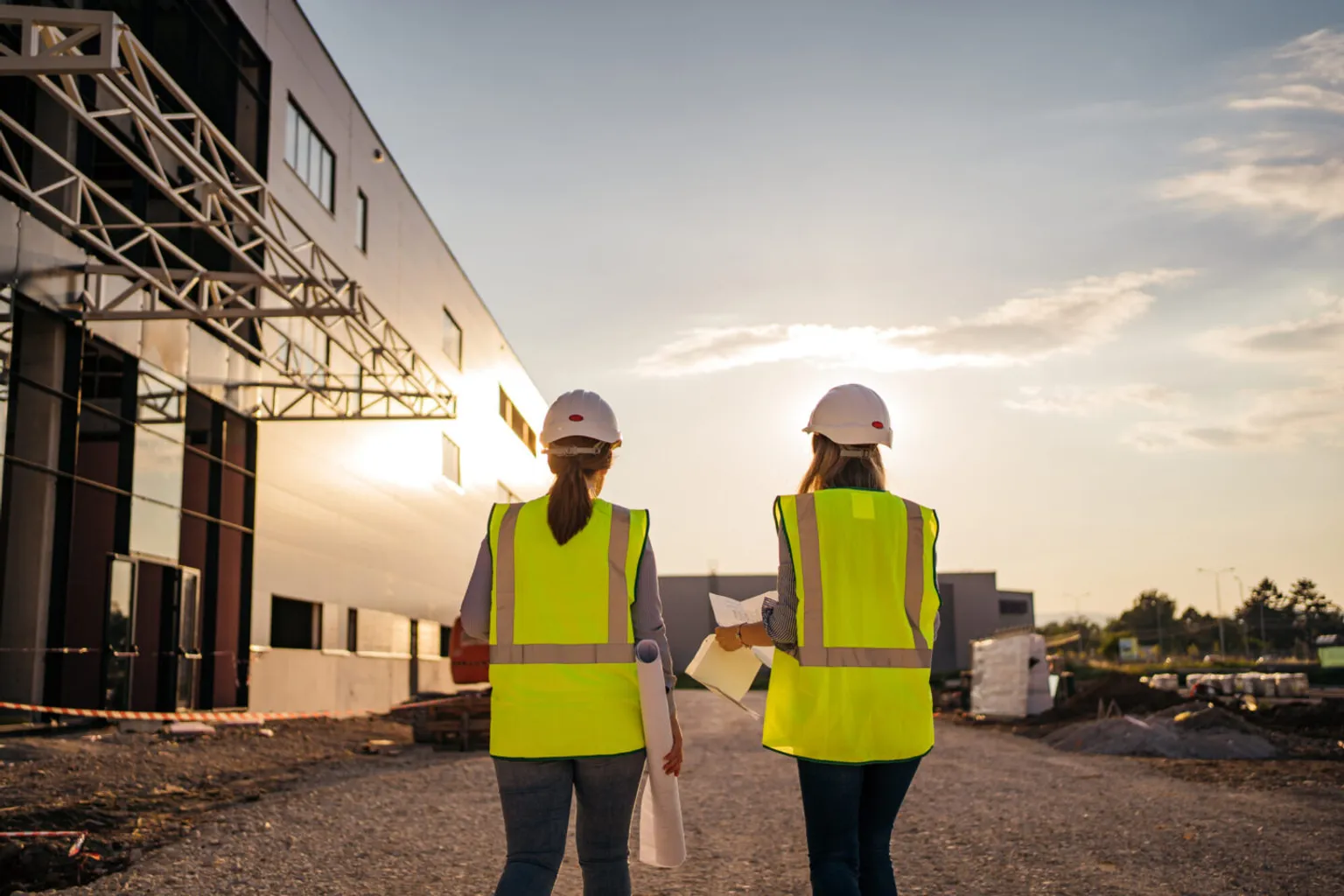
The Drone Inspection Technique
Whatever kind of inspection you’re completing, you should go into your project with an idea of how it will proceed. While planning out your drone’s flight path and ensuring that it will stay in range of you may seem like obvious directives, your strategy should include these steps every time:
Once you know what you’re doing and how you can do so legally, it’s time to put your drone in the air. Before you send it over your site, check to make sure any cameras, microphones or other attachments are secure and working, as well as that the drone is fully charged so you can complete your assessment without interruption.
Depending on your purpose, you may end up with extensive amounts of data to analyze. From here, you can take the information you’ve gathered and distribute it to the right people. For example, if your inspection is for a construction project, you can send the images to your architect, who can begin planning their designs. If you’re working with emergency services, you can immediately forward the information to rescue teams who can approach their goals with a well-informed plan.
How Can Drones Be Used Across Industries?
Commercial drones are making a huge impact in a variety of industries. Experts estimate the market for drones is $127 billion, with their use potentially leading to the creation of 100,000 jobs by 2025 in the United States alone. Many different industries can use drones, but they are most popular for organizations that need to access difficult to reach places or collect huge amounts of data.
To give you an idea of how these drones are being used, check out some of the ways these major industries have implemented drone technology.
Increased Agricultural Understanding
Drones offer a lot of value to the agricultural industry. Drones can record a crop’s progress and identify failing plants. They also can be used to increase understanding of irrigation systems and farmland to help farmers get the most out of their crops.
Emergency Services Support
When disaster hits, information helps emergency responders act and save lives. Drones give users a birds-eye view of a disaster area to assist with locating those in need and can even deliver medical supplies to crucial areas.
Enhancing Industry Safety With Strategic Drone Use
Safety is perhaps the top reason that companies choose to use drones for inspections. Whenever you work on a new job site, you’re walking into a location without knowing exactly how safe it is or whether there are areas with heightened risks. Drones allow you to take a proactive approach by surveying the area before sending anyone in. This way, you can identify any concerns before they become an issue, lowering your liability. From construction monitoring and inspections to material transportation and planning projects, drones can make an organization’s operations safer in multiple ways. Learn more about how drones can improve safety at worksites:
Those in the construction industry have found they can use drones to improve worksite safety by inspecting potential sites before work begins. Aerial survey drones can fly over a potential construction site to help companies get a picture of where buildings and other structures will be needed. This flyover can also spot potential safety risks before workers ever get to the site, helping them arrive fully prepared to take on any challenges.
By using drone inspections, you can protect your workers by not having to send them to potentially dangerous worksites to conduct preliminary inspections and mapping. Drones are one of the safest methods to inspect worksites quickly, plan out earthwork, react to unexpected variables and design site-appropriate buildings.
If you have a large worksite with tons of equipment, buildings and other assets spread across the ground, it can be difficult to keep an eye on everything by simply walking the area looking for issues. Drone inspection monitoring allows companies to quickly get a clear idea of how projects are progressing and take action as a result of that information.
For example, drone inspections for construction sites help staff get a full picture of the entire worksite efficiently. Instead of having staff climb up structures that are under construction, wasting time, and possibly putting them in harm’s way, you can use drone services as a safer, faster way to monitor the progress of projects.
Companies that have large-scale projects under development can take video captured by aerial survey drones and end up converting it into a three-dimensional image, which they can then compare to the original plans for the project. This comparison ensures that your projects are being built to spec and meet all of the safety requirements for your project.
Besides keeping track of the progress of your projects, you can also use drones to complete both planned and reactive maintenance inspections, especially for tall structures. Maintenance inspections can be costly for companies and a safety concern for workers who manually inspect structures like towers, skyscrapers and bridges.
Drone technology for inspections of various assets is especially useful when you want to identify hazards without putting a worker at risk. Aerial survey drones can get a view of a worksite from an elevated area, helping to conduct hazard inspections that keep your workers safe. Like a drone’s ability to inspect tall structures, drones can also assist with inspecting hard to reach, unsafe areas, such as beside highways and under bridges.
In addition to increasing the safety of workers by finding hazards and inspecting areas from a remote location, drones can also help companies meet government regulations on public safety. Whether the drone user is a government inspector or an independent inspector hired by a company looking to stay on top of regulations, a trained pilot can fly a drone to quickly inspect construction sites and other relevant projects to ensure they meet local, state and federal laws and image any possible violations.
Besides inspection and monitoring from drones, some drones can even assist with transportation. They can be outfitted to act as material handling vehicles, taking materials, equipment and tools around construction sites and other relevant areas. This transportation can increase safety by getting materials and tools to areas that can be difficult to access, especially when the worker would normally have to carry the material with them.
What Are the Advantages of Using Drones?
Organizations across many industries recognize the benefits drones can provide to their daily processes and workers. Investing in drones can help in several areas, such as making tasks faster, lowering costs and providing useful data. If you’re thinking about investing in drone inspection services, check out some of the benefits of drone inspections:
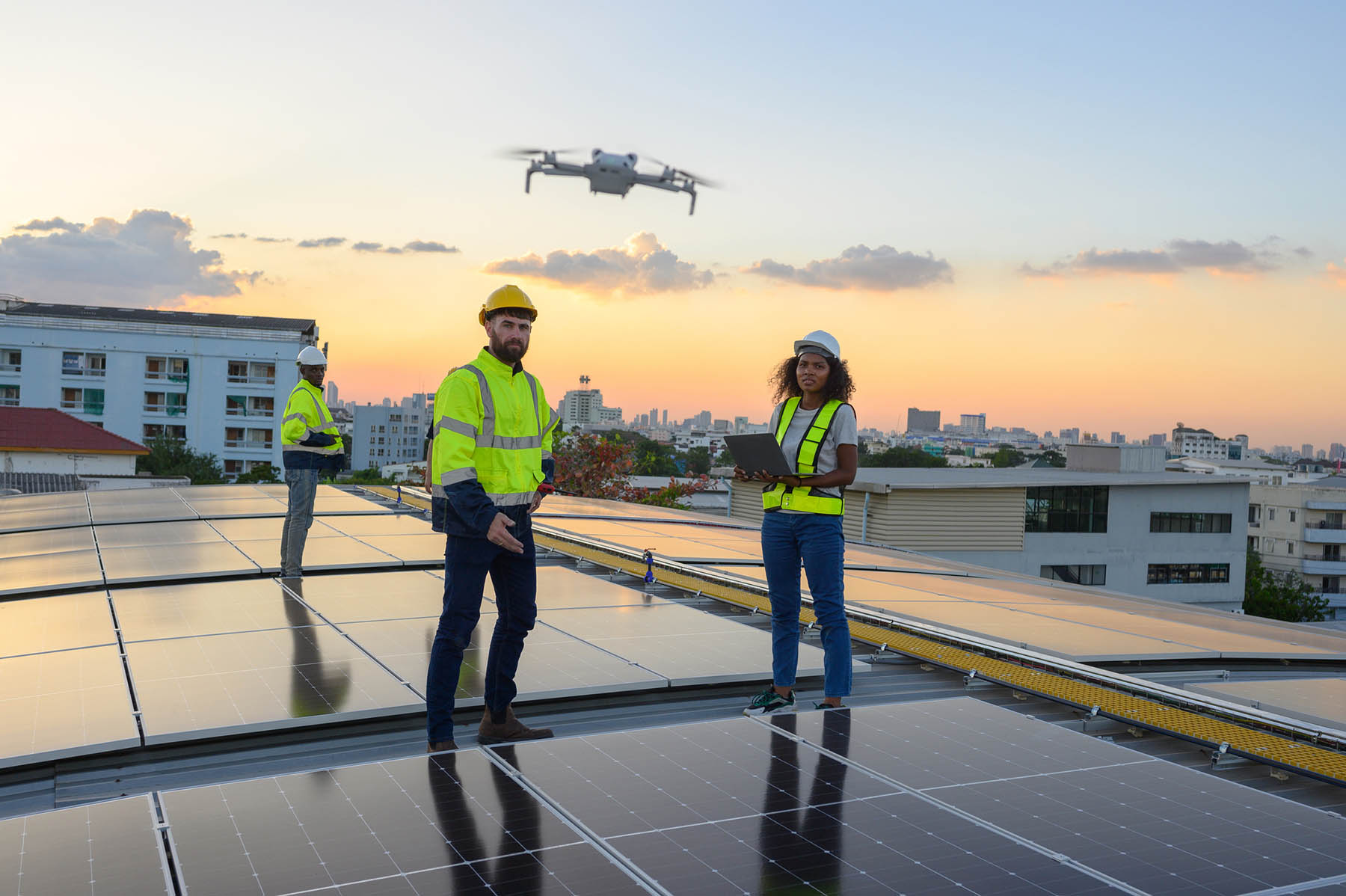
1. Improved Speed
Drones are prized for their ability to speed up time-consuming tasks that take staff away from other jobs. By speeding up inspections and other tasks, drone services allow companies to get more done in the workday and let them take on more projects or give greater attention to other areas that have been neglected.
For example, using drones for inspections can greatly speed up the inspection process, especially in areas where the inspection needs to cover a lot of ground and forces the inspector to navigate difficult spaces. A drone can quickly fly across a property, getting a complete picture of every part of the area or assets that the inspector needs to evaluate. The drone pilots can complete their inspection faster as a result, and your company can deploy teams to deal with potential issues before they become a real problem.
2. Clear and Useful Data
Drones can take pictures, record videos and be outfitted with other sensors, making them perfect data gatherers. These drones can assist users by getting the lay of the land and identifying crucial points of interest that are relevant to a project. This sort of data is perfect for projects that need to meet strict regulations and specifications, as it lets them get ahead of potential challenges.
Besides helping companies react to immediate challenges, drone inspections can help generate a long visual paper trail. Inspectors can reference data from previous inspections and compare it to the most recent data to estimate when a problem first started. Instead of relying on an inspector’s memory, companies will have a vast database of footage to rely on.
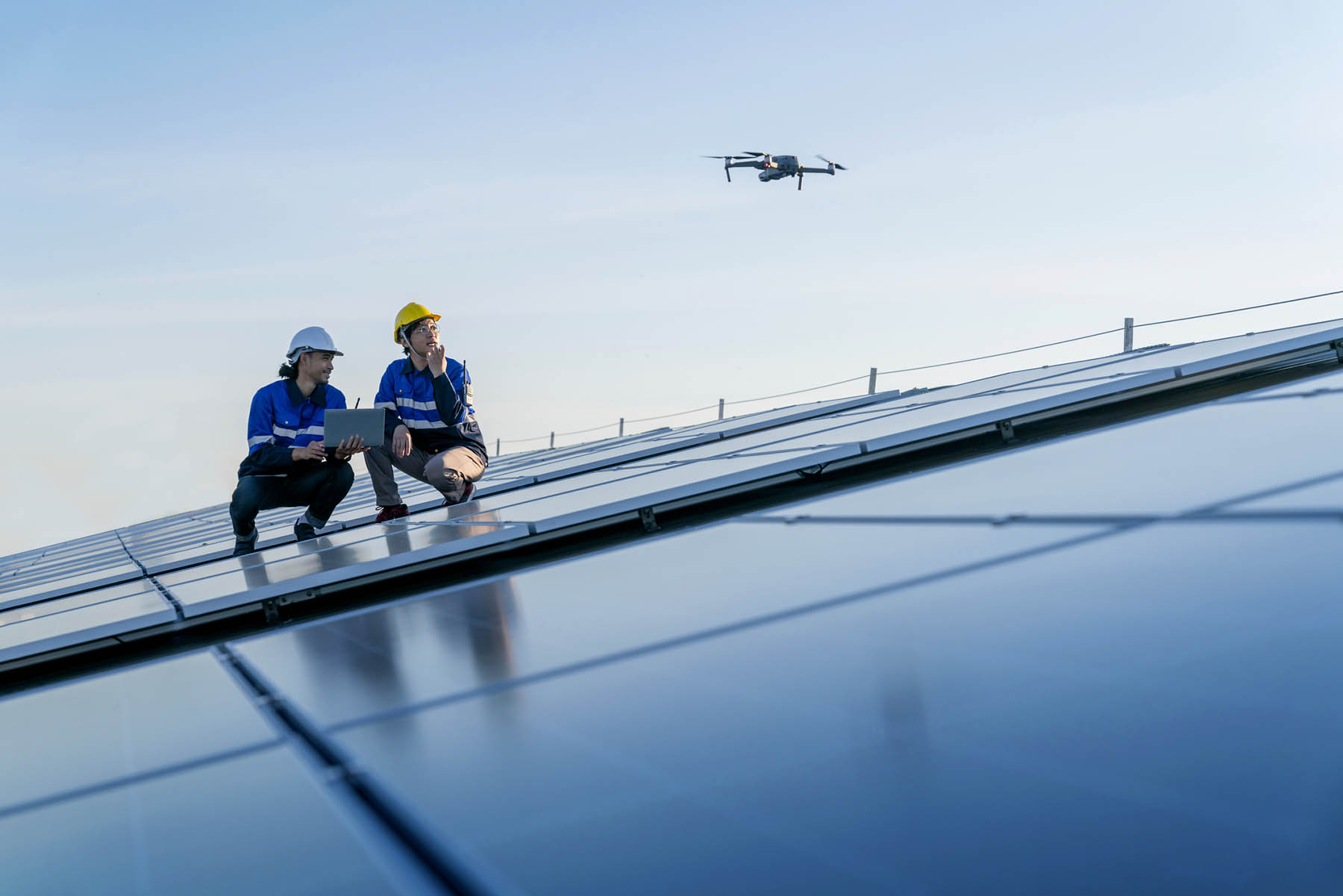
3. Increase Safety
Safety is crucial for any company, and using drones is an excellent way to facilitate that safety. As mentioned in the previous section, drones offer safety benefits for the planning, monitoring, inspecting and material transporting processes of a company. No longer will you have to send staff up the side of a skyscraper, putting them in harm’s way, to conduct routine inspections. Instead, a trained pilot can control the drone remotely and capture all of the needed information in comfort and safety.
4. Keeps Costs Down
Drone inspection costs are usually lower than other inspection solutions. Having inspectors manually inspect assets can be very time-consuming, which costs you more money due to the lengthy inspection process. Using drones allows inspectors to complete their inspection faster, so you aren’t paying for as much of their time.
Not using drones can also force your organization to spend money on costly equipment that helps your inspectors access areas that are hard to reach. Additionally, if you need to conduct aerial inspections, a drone inspection is going to be much less expensive than other aerial options like planes and helicopters.
Operating Drones Legally During Inspections
Though drones can be incredibly helpful in inspections and greatly increase safety, companies should make sure that users operate their drones legally. Improperly trained drone users can crash, damage the environment and even harm workers. As such, there are Occupational Safety and Health Administration (OSHA) drone regulations and other laws, such as those put forward by the Federal Aviation Administration (FAA), that pilots must follow to operate a drone legally while performing inspections.
The regulations might change depending on the industry, state and actions taken with the drone. Here are some of the regulations from the FAA that pilots need to follow when operating drones:
- Operators should register drones and label them with the registration number from the FAA.
- Operators should always keep drones in their line of sight and should fly at or below 400 feet.
- Operators should not fly near airports or other aircraft.
- Operators should never fly over large groups of people.
- Operators should never fly a drone under the influence of drugs or alcohol.
The Future of Drone Technology
Drones are only going to continue to improve, providing even more services while becoming safer and easier to operate. One way drones could impact the construction industry is by adding new X-ray tech that helps them craft high-resolution 3D maps of objects through the use of Wi-Fi. This new feature could help monitor dangerous structures that could harm workers or the general public. It can also be used to create models of areas hidden behind walls or other barriers to give workers greater information.
More technological developments for drones will assist users and help workers do their jobs safely and more efficiently. As drones continue to receive more attention and use, they will also continue to become safer. With more information available, more guidelines will regulate the safe use of drones.

